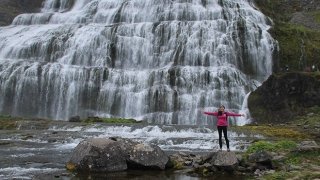As a high school biology, chemistry and ESL science teacher, I think a lot about how people interact with the natural world. When I was selected for the Grosvenor Teacher Fellowship through National Geographic and Lindblad Expeditions, I was so excited to travel on an Arctic expedition to Greenland, Iceland and Svalbard—and to share the experience with my students back in Washington, D.C.
Kayaking through glaciers, hiking along cascading waterfalls and seeing polar bears with my own eyes gave me a new sense of urgency to preserve our gorgeous, delicate world. On a tiny, remote volcanic island, I saw a roll of plastic packing tape washed up on the sand. It struck me that someplace so remote was being impacted by the everyday lives of people thousands of miles away, without them even realizing it! It made me think about the importance of emphasizing environmental education in my science classes.
One of my goals was to create a Google map for my students, where they could click different regions of the world to see how climate change is impacting the area. The expedition gave me the chance to network with people from around the globe so I could better create a well-rounded picture, where my students could learn about scientific data sets as well as how climate change affects us all.
I highly recommend National Geographic’s Educator Certification Program to my fellow USC Rossier alumni. The certification program is free, and available online to formal and informal K–12 educators in every subject area. It aligns beautifully with Rossier’s core values, encouraging students—and educators—to be curious, creative changemakers in their communities.




